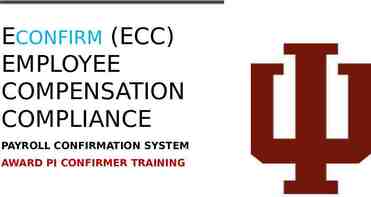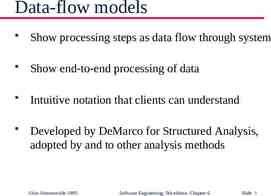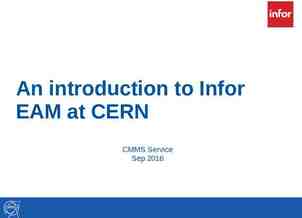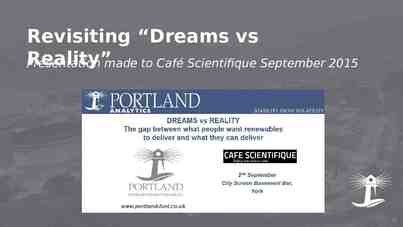COEN 445 Communication Networks and Protocols Lab 3 Wireshark Lab: DNS
16 Slides324.13 KB

COEN 445 Communication Networks and Protocols Lab 3 Wireshark Lab: DNS Claude Fachkha

Introduction Recall, a Domain Name System (DNS) translates hostnames to IP addresses, fulfilling a critical role in the Internet infrastructure. In this lab, we’ll take a closer look at the client side of DNS. Recall that the client’s role in the DNS is relatively simple – a client sends a query to its local DNS server, and receives a response back. As shown in Figures 2.21 and 2.22 in the textbook, much can go on “under the covers,” invisible to the DNS clients, as the hierarchical DNS servers communicate with each other to either recursively or iteratively resolve the client’s DNS query. From the DNS client’s standpoint, however, the protocol is quite simple – a query is formulated to the local DNS server and a response is received from that server. Before beginning this lab, you’ll probably want to review DNS by reading Section 2.5 of the text. In particular, you may want to review the material on local DNS servers, DNS caching, DNS records and messages, and the TYPE field in the DNS record. 2

1. nslookup nslookup tool allows the host running the tool to query any specified DNS server for a DNS record. An example is provided in the next slide. 1. Run nslookup to obtain the IP address of a Web server in Asia. What is the IP address of that server? 2. Run nslookup to determine the authoritative DNS servers for a university in Europe. 3. Run nslookup so that one of the DNS servers obtained in Question 2 is queried for the mail servers for Yahoo! mail. What is its IP address? 3

1. Nslookup (Cont.) 4

2. ipconfig ipconfig can be used to show your current TCP/IP information, including your address, DNS server addresses, adapter type and so on. Try to following commands: # ipconfig \all # ipconfig /displaydns # ipconfig /flushdns 5

3. Tracing DNS with Wireshark Now that we are familiar with nslookup and ipconfig, we’re ready to get down to some serious business. Let’s first capture the DNS packets that are generated by ordinary Websurfing activity. Use ipconfig to empty the DNS cache in your host. Open your browser and empty your browser cache. Open Wireshark and enter “ip.addr your IP address” into the filter, where you obtain your IP address with ipconfig. This filter removes all packets that neither originate nor are destined to your host. Start packet capture in Wireshark. With your browser, visit the Web page: http://www.ietf.org Stop packet capture. 6

3. Tracing DNS with Wireshark (Cont.) 4. Locate the DNS query and response messages. Are then sent over UDP or TCP? 5. What is the destination port for the DNS query message? What is the source port of DNS response message? 6. To what IP address is the DNS query message sent? Use ipconfig to determine the IP address of your local DNS server. Are these two IP addresses the same? 7. Examine the DNS query message. What “Type” of DNS query is it? Does the query message contain any “answers”? 8. Examine the DNS response message. How many “answers” are provided? What do each of these answers contain? 7

3. Tracing DNS with Wireshark (Cont.) 9. Consider the subsequent TCP SYN packet sent by your host. Does the destination IP address of the SYN packet correspond to any of the IP addresses provided in the DNS response message? 10. This web page contains images. Before retrieving each image, does your host issue new DNS queries? 8

3. Tracing DNS with Wireshark (Cont.) Now let’s play with nslookup. Start packet capture. Do an nslookup on www.mit.edu Stop packet capture. 9

3. Tracing DNS with Wireshark (Cont.) You should get a trace that looks something like the following: 10

3. Tracing DNS with Wireshark (Cont.) We see from the previous screenshot that nslookup actually sent three DNS queries and received three DNS responses. For the purpose of this assignment, in answering the following questions, ignore the first two sets of queries/responses, as they are specific to nslookup and are not normally generated by standard Internet applications. You should instead focus on the last query and response messages. 11

3. Tracing DNS with Wireshark (Cont.) 11. What is the destination port for the DNS query message? What is the source port of DNS response message? 12. To what IP address is the DNS query message sent? Is this the IP address of your default local DNS server? 13. Examine the DNS query message. What “Type” of DNS query is it? Does the query message contain any “answers”? 14. Examine the DNS response message. How many “answers” are provided? What do each of these answers contain? 12

3. Tracing DNS with Wireshark (Cont.) Now repeat the previous experiment, but instead issue the command: nslookup –type NS mit.edu Answer the following questions : 15. To what IP address is the DNS query message sent? Is this the IP address of your default local DNS server? 16. Examine the DNS query message. What “Type” of DNS query is it? Does the query message contain any “answers”? 17. Examine the DNS response message. What MIT name servers does the response message provide? Does this response message also provide the IP addresses of the MIT name servers? 13

3. Tracing DNS with Wireshark (Cont.) Now repeat the previous experiment, but instead issue the command: nslookup www.aiit.or.kr bitsy.mit.edu Answer the following questions: 18. To what IP address is the DNS query message sent? Is this the IP address of your default local DNS server? If not, what does the IP address correspond to? 19. Examine the DNS query message. What “Type” of DNS query is it? Does the query message contain any “answers”? 20. Examine the DNS response message. How many “answers” are provided? What does each of these answers contain? 14

References Online services - Computer Networking: A Top-Down Approach, 6/E James F. Kurose, University of Massachusetts, Amherst - See more at: Keith W. Ross, Polytechnic University, Brooklyn 15

Claude Fachkha c [email protected]






